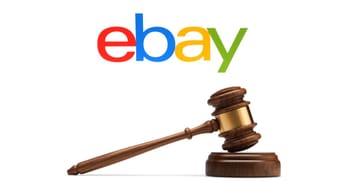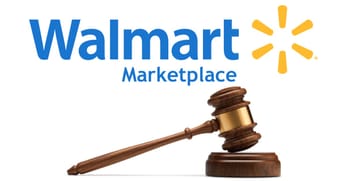Poshmark Buyers & Sellers Find Math Does Not Add Up On New Fee Structure
UPDATE 10-16-24
Just two weeks after announcing a major shakeup in fee structure, Poshmark is rethinking the move, saying they've heard feedback and are working on updates to the policy to "better meet your needs". Will they revert back to full seller fees or something else?
Poshmark users are doing the math on new fee structure, calling into question company's promises of "simplification", "transparency" and "reduction."
Last week, Poshmark launched a new fee structure that it said reduced the previous 20% fees in the US, but users have found that's not true on many lower price items as buyers face sticker shock at checkout.
The changes were promoted as "simplifying selling and buying" on the platform, but the combination of a percentage plus a tiered flat rate amount actually makes it even more complicated to figure out what the total fee will be on any given item and how it compares to the old fees.

To add even more complexity to the table, Poshmark also changed it so the new fee percentages are now applied on the total sale price, including shipping and sales tax - which they had not been before.
That makes it impossible for users to get an accurate picture of the exact amount in fees, as there is no way to know ahead of time where an eventual buyer will be located and how much the tax amount will be.
One very helpful seller on Reddit did their best to help fellow Poshers estimate the new fee breakdown with a spreadsheet breakdown assuming an average 6% in sales tax and $7.97 shipping.
The result? Using those numbers, it looks like anything below ~$90 actually has a higher total fee amount than under the previous 20% structure!

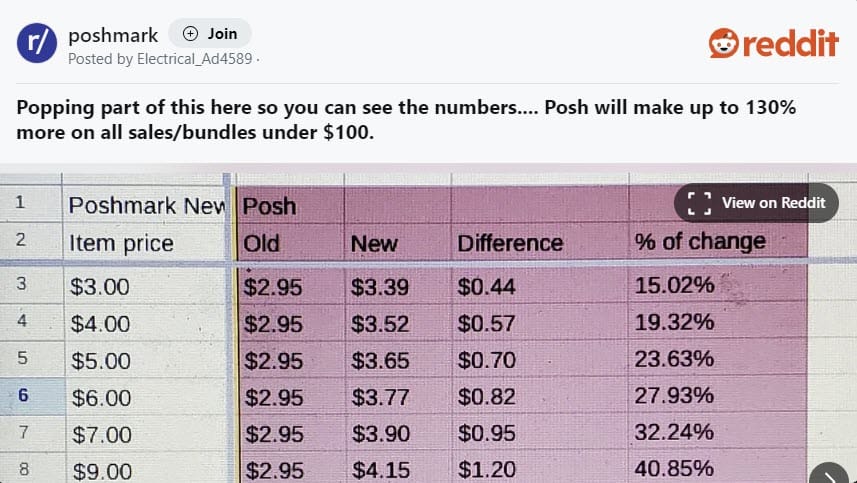
Sellers expressed their frustration with what they believe was misleading communication from Poshmark, saying the vast majority of items they sell are below $100, so this is not a reduction of fees in many cases.
My thoughts are that the bulk of Posh's sales are items under $100... and I would even guess that the average price of all available items on Posh runs close to $15 but that is a guess. With the new fee structure, Posh stands to make their biggest increases with the lower priced items.
yes, items over $100, Posh starts seeing less $ but if they're selling 100 $15 items for every $1500 item.... they will have increased their earnings by $392 on the $15 items but only lost $102.51 on the $1500 item. I wish I could get my hands on those numbers...
This change was so poorly communicated to the customers. They have all those people on payroll and they should have definitely created an interactive tool within the app to help us calculate. Or created a spreadsheet like this for people to enter listing prices and determine total costs.
Also they could have used truth and transparency to help impacted buyers and sellers adjust to this change. Corporate Tech companies like Poshmark have TPMs, change teams, marketing, support, learning and development, customer success teams etc. Too many cooks in the kitchen for such a poor communication strategy.
And it's not just sellers who have taken to Reddit to vent, buyers are also posting screenshots of the exorbitant fees they are now seeing at checkout.
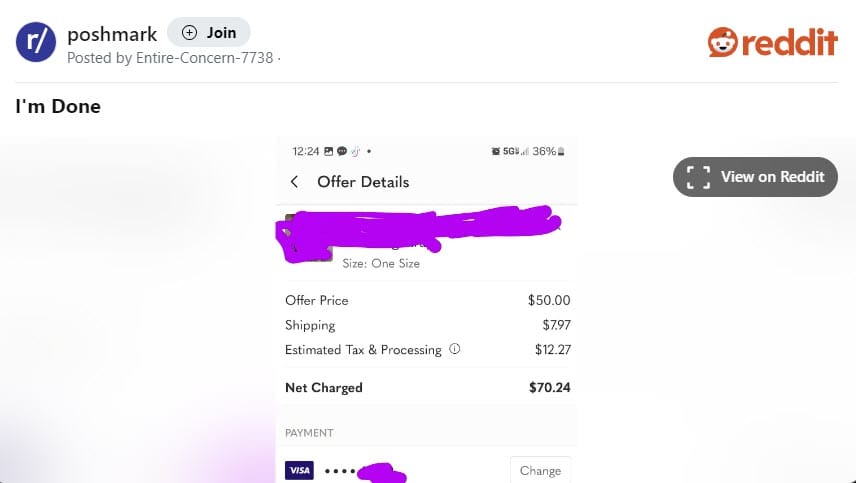
I went to buy something for $70, did the usual math in my head like I have done on Poshmark for years, expected it to be around $80 in the end. Nope. It came out to $91 total. I could just pay $15 more for this exact same thing brand new on Amazon so it’s no longer worth it.
The new fee structure makes it look like an Uber eats order and that’s not a good thing :/
Those sentiments echo similar comments that have flooded Mercari subreddits since they made a similar move in March, dropping selling fees and shifting fees to buyers instead.
Initially, Mercari did not show the fee breakdown until the checkout screen, like Poshmark is doing now, but they quickly discovered that lead to an increase in abandoned carts as buyers encountered sticker shock and choose not to complete the sale - leading them to change their item page design to provide a fee estimate upfront.
Mercari VP Marketing David Lee has been making the social media rounds, doing interviews with influencers and creators to try to help quell ongoing discontent and distrust since their fee change - and announcing a fee cap of 10% is currently being implemented across the site, all paid by the buyer, with no additional fees on the seller side.
eBay will also no doubt be paying close attention to the backlash Poshmark is receiving, as they just announced fee-free private selling in the UK and as yet unspecified buyer fees soon to follow in early 2025.
Despite the claims of increased transparency, Poshmark has also made the astounding decision to combine the new Buyer Protection fee and sales tax in the main checkout view, only showing the breakdown if/when the buyer clicks the little i in a circle for more information.
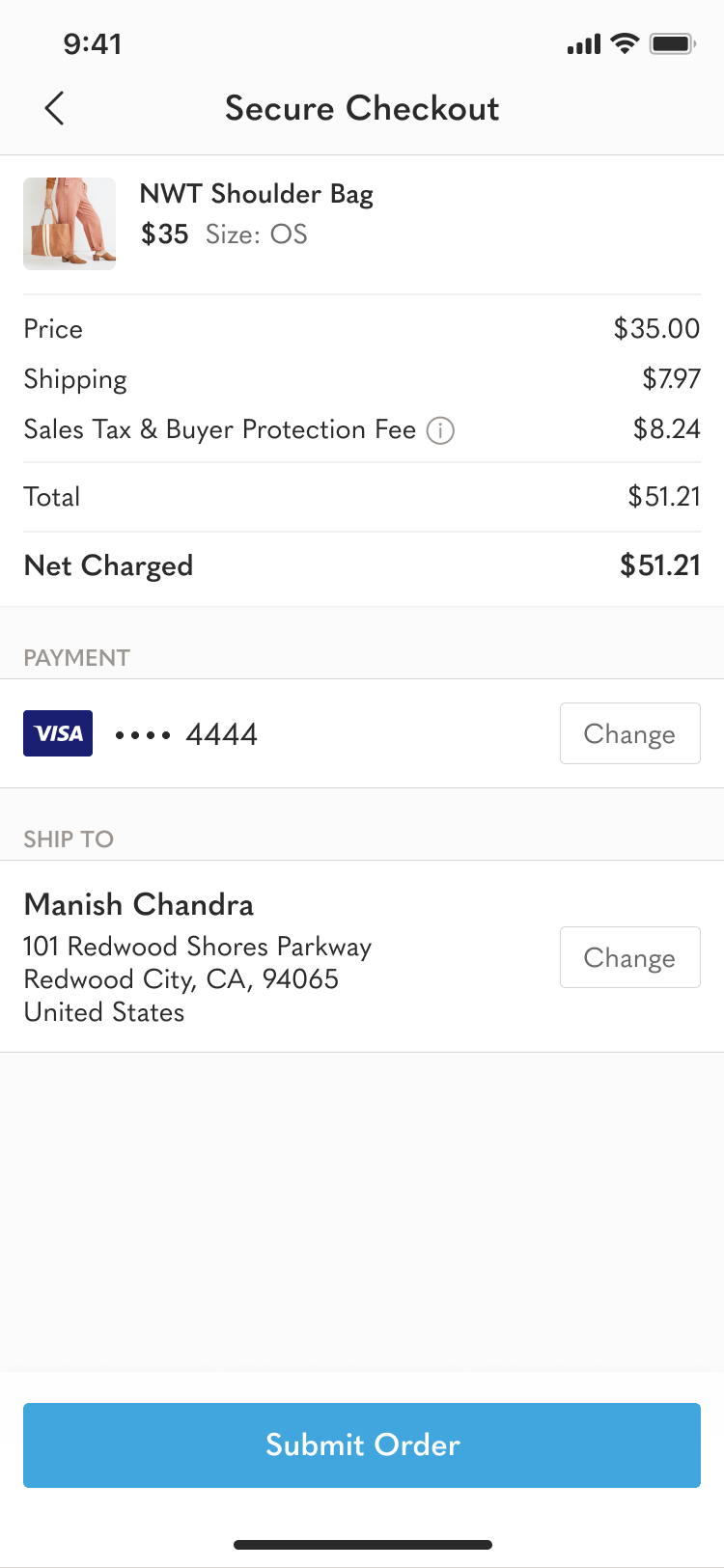
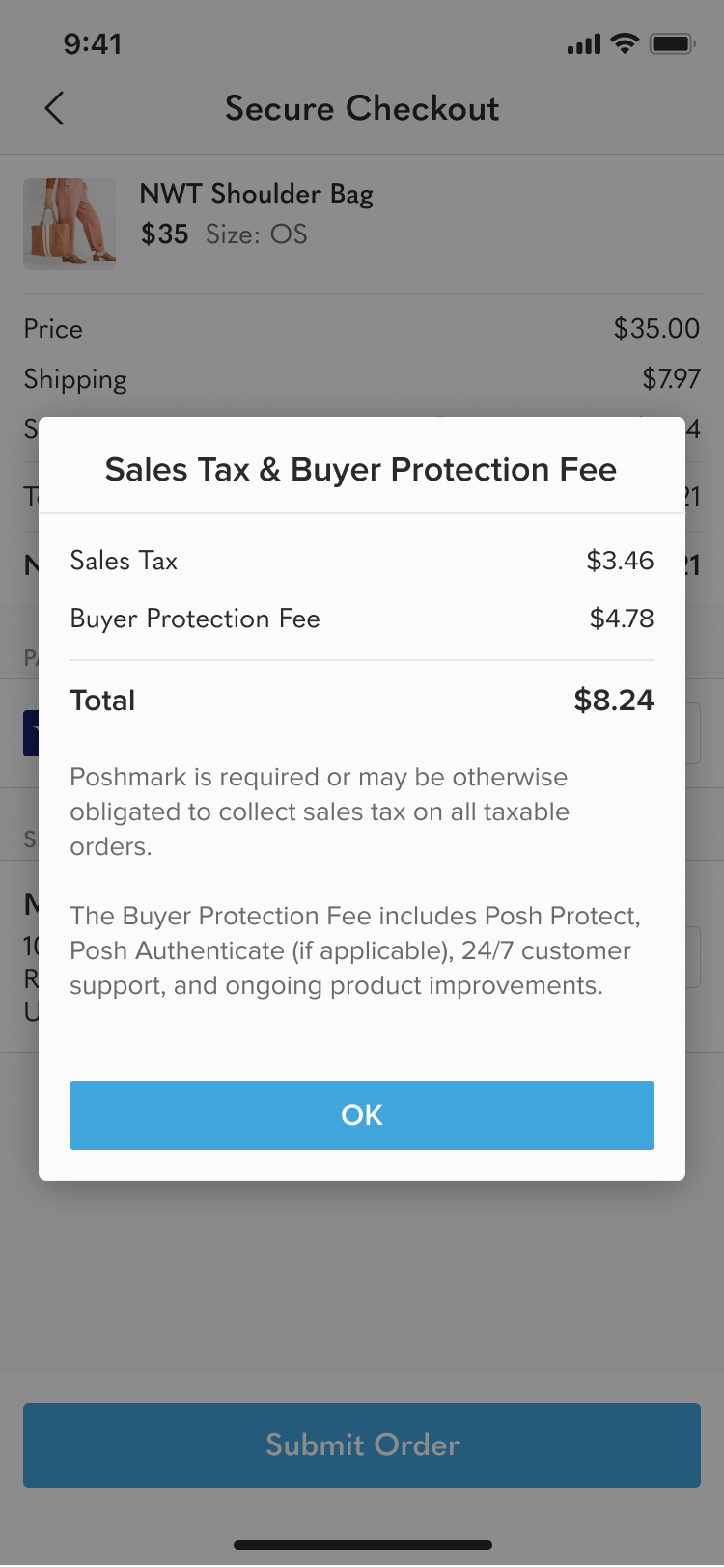
That could prove to be a costly mistake for Poshmark as many state tax laws specifically say tax must be stated separately from other charges (hiding it one click away behind an info pop up likely does not meet compliance) and regulatory powers like the FTC are increasingly cracking down on junk fees and misleading business practices.
And while we're on the subject of transparency, Modern Retail caught a very interesting change in wording to the original Poshmark blog post.
Poshmark initially wrote in its blog post that it changed the fee system to “simplify selling and buying, ensuring our community has the best experience.” However, as of Friday morning, the language was updated to: “Our goal is to offer lower selling fees while still providing a full suite of tools and services at no additional cost to our sellers.”
When asked about the change in wording, a Poshmark spokesperson told Modern Retail, “We acknowledge that our initial announcement language was refined to provide further clarification based on initial community response.” In its blog post, Poshmark also said the changes will help sellers to “earn more with every sale.”
While the claim that sellers will "earn more with every sale" may be technically true - if you only look at the seller side of fees now - anyone who has actually operated an online business knows the only thing that matters to the consumer is the total cost to them out the door...and that is certainly not going down under the new fee structure for many items listed on the site.
Sellers can only "earn more with every sale" if in fact they continue to make sales at the same relative average price margins and volume they had before.
But if other marketplaces who have gone this route show us anything, the reality will likely be that buyers will pressure sellers to give steeper discounts to make up for the fee sticker shock or they will simply go elsewhere, in which case neither sellers nor Poshmark will be earning more.
That seems like an awfully risky and desperate proposition, especially as the all important Q4 shopping season ramps up and both sellers and buyers have other options for where to spend their holiday listing efforts and dollars.
What do you think of Poshmark's new fee structure? Are you seeing sticker shock at checkout? Let us know in the comments below!


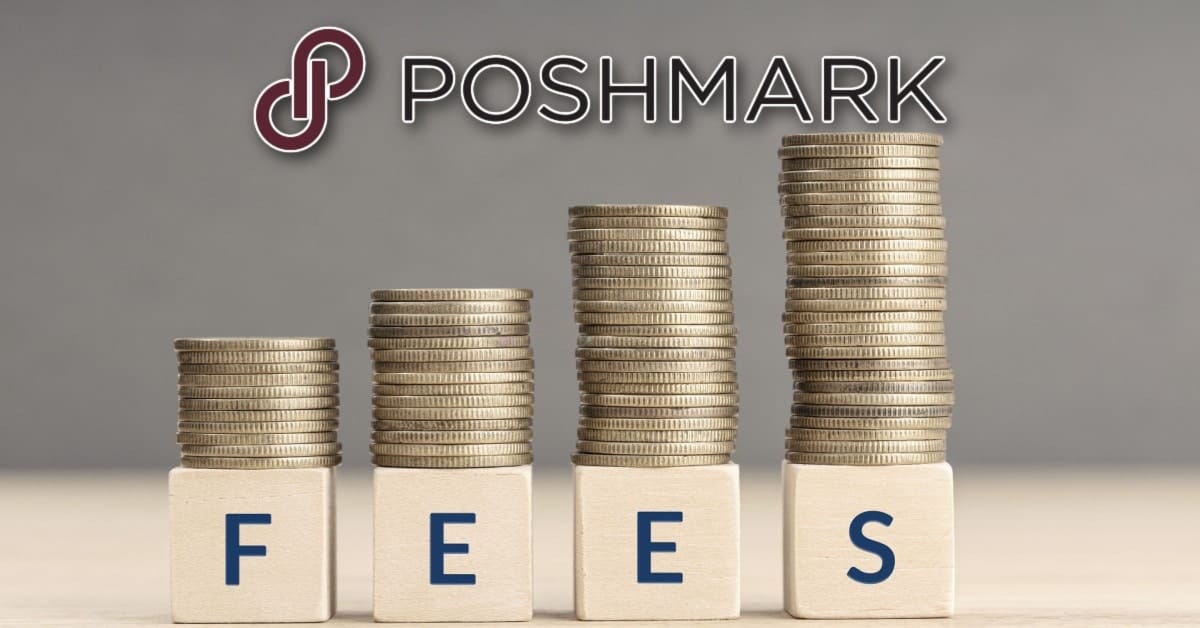



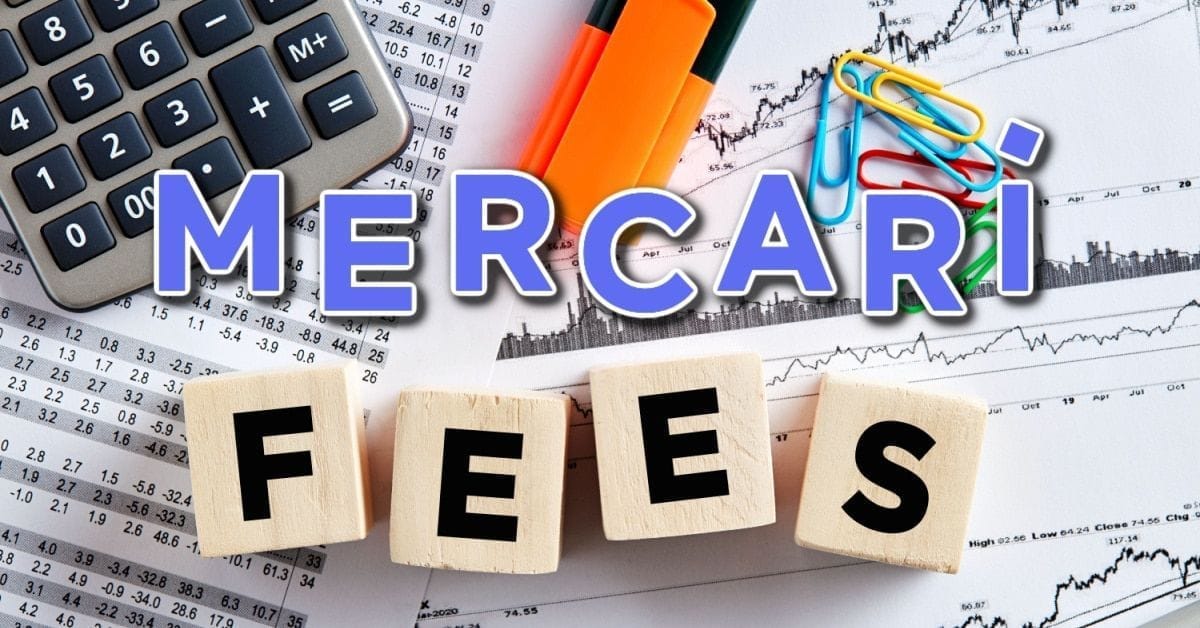





 JaeLynn
JaeLynn



